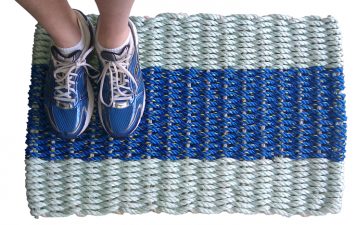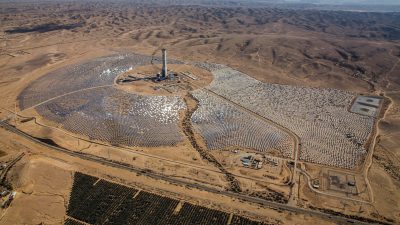
Paint researchers at University of Notre Dame go green, and not just ‘cause they’re the “Fighting Irish”
A team of scientists and engineers led by Professor Prashant Kamat is generating energy from solar paint. Building on recent advances in semiconductor nanocrystal research, they’ve developed a one-coat solar paint for designing quantum dot solar cells.
Energy is created when this paste, made of semi-conducting nano-particles of titanium dioxide mixed with cadmium sulfide or cadmium selenide, is applied to a conducting glass surface and annealed at high temperature. Cadmium is a highly toxic metal historically used as a protective coating for steel and as an ingredient in creating red, orange and yellow pigments. This spreadable liquid mimics traditional paint, it’s applied via brushwork or spray painting.
Seeking the perfect shade of power production
Named “Sun-Believable”, Kamat’s prototype presently operates at a power conversion efficiency exceeding 1%, compared to 10% efficiencies of traditional photovoltaic panels. Predicted conversion rates for solar paints hover at 5%, less than half the current efficiency of thin film solar panels. Low cost may counterbalance low efficiency.
“This paint can be made cheaply and in large quantities. If we can improve the efficiency, we may be able to make a real difference in meeting future energy needs”, Professor Kamat told Mashable.com. The common compounds used to create Sun-Believable are readily available on the open market.
It’s estimated that covering 400 square feet of roof with solar paint would cost $100, traditional solar panel installation for the same area could cost a hundred times more.
There are worldwide claims of progress in this tantalizing concept of electricity generation via sun reactions in applied coatings.
Dr. Paul Dastoor and his team of physicists at Australia’s University of Newcastle spent the past decade developing organic solar paint. Their environmentally-friendly technology takes the form of coatings or flexible polymer sheets that generate electricity when applied to building roofs or any conductive surface. The sheets, which are “printable”, contain a nano-particle fluid that is essentially water-based paint. Work is underway to develop the product so it can be directly painted onto building surfaces.
Professor Dastoor’s invention could allow every household to generate its own sustainable electricity. See if he convinces you:
[youtube]http://www.youtube.com/watch?v=-O39o_ERtbg[/youtube]
Recent research at the University of Illinois has also produced an ultrathin silicon solar cell through a printing process. It’s thinness renders it ultraflexible and it performs similar to traditional solar cells.
Enter David Waldeck, Professor and Chair of the Department of Chemistry at the University of Pittsburgh. He leads a research program focused on understanding electron transfer reactions, electron transport in supramolecular structures, and nanophotonics. Waldeck uses methods of spectroscopy, electrochemistry and microscopy to investigate primary processes in the condensed phase which includes liquids, solids, and liquid/solid interfaces.
Layman’s translation: Dave makes solar paint. Invest a quarter-hour watching his recent TED talk on the topic:
[youtube]http://www.youtube.com/watch?v=yMaWEb4Jj5w[/youtube]
There are aspirations towards “print at home” solar panels, but current technology hasn’t caught up with the dream. One company that’s currently in commercial production is Nanosolar: their patented nanoparticle technology makes printable solar sheeting.
Cheap electricity with very low production and installation costs
Improvements are necessary for scalable application, but initial efforts show next generation solar cells can be economically viable. There is also criticism.
While there are many applications for transparent flexible cells, it’s an Olympian long jump from high-tech production to simple paints and home printers. Nano technology has unknown environmental risks, there is little study of largescale application in exterior environments. As example, self-cleaning concrete contains particles that accelerate concrete deterioration and leach potentially harmful compounds into the soil and watershed. Uncontrolled release of nano photo-catalytic titanium dioxide through erosion or improper disposal would be detrimental to ecosystems.
If solar paint can be successfully and sustainably developed, it will radically alter our selection of building materials, particularly in regions of high solar gain. Middle Eastern nations experience virtually constant sunny days: Jordan averages 330 days of full sun each year. Can you envision Amman’s beige masonry transformed into a rainbow of energy-producing color?
Cutting reliance on fossil fuels, slashing our utility bills, and reducing greenhouse gasses may soon be a brushstroke away.
Image of robot painter from Shutterstock




Comments are closed.